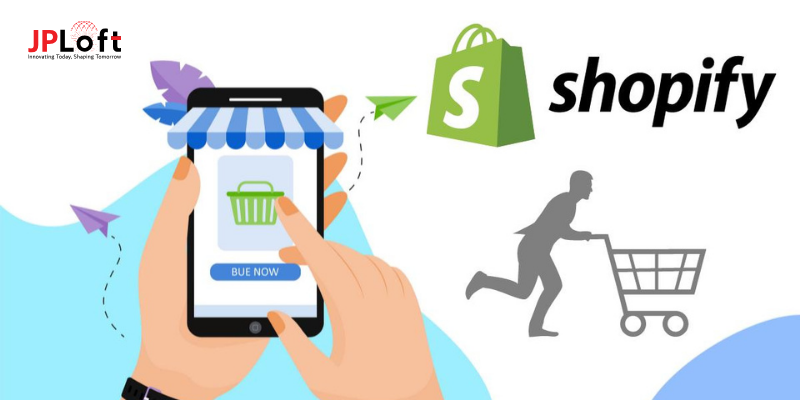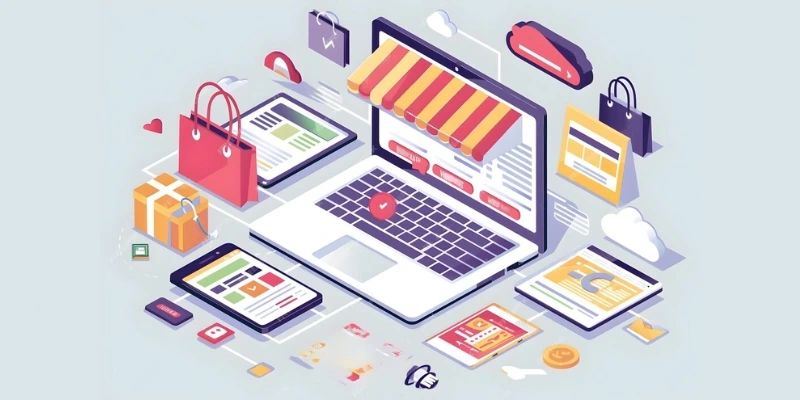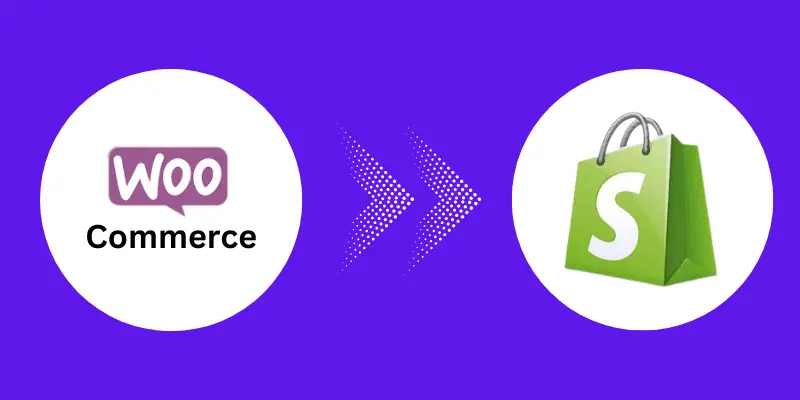As we mark one year of engagement in e-commerce, we must look ahead and consider its ever-evolving landscape and prospects. Shopify development has long been at the center of online businesses; by 2025, this dynamic space may undergo dramatic shifts that necessitate vigilant observations of emerging trends that promise further transformations.
Shopify Development Trends of 2025 are set to revolutionize how online stores function and engage with their customers, from enhanced user experiences to cutting-edge technological integrations - these trends provide businesses a way to remain ahead in today's highly competitive e-commerce environment.
Shopify developers have seen an upswing in interest and use of Progressive Web Apps (PWAs). Consumers increasingly require fast and immersive experiences; PWAs provide an effective solution by merging web and mobile application features into an all-inclusive experience that engages shoppers while increasing engagement and conversion rates.
This trend could change how Shopify stores interact with consumers as more individuals demand faster interactions that combine web and mobile features into seamless solutions like PWAs.
Shopify Development Companies have witnessed their industry expand as businesses prioritize environmentally inclusive business practices and incorporate eco-friendly and accessibility features into their projects.
Shopify Development Trends You Need to Consider in 2025
Key Shopify Development Trends for 2025 will address advances and strategies businesses should implement to enhance their online presence.
Headless Commerce Architecture
One key trend reshaping Shopify's development landscape is headless commerce architecture. Traditional e-commerce platforms, like Shopify, feature monolithic structures where both front-end and back-end elements are tightly interlocked, with headless commerce decoupling these components and permitting businesses to use different technologies on either end - an attractive prospect for Shopify developers alike!
Shopify developers should become acquainted with headless commerce architecture to explore how it can enhance the digital shopping experience for their clients.
Progressive Web Apps (PWAs)
Demand for faster and more responsive web experiences has led to an explosion of Progressive Web Apps (PWAs). PWAs combine the best elements from web apps and native mobile applications into an immersive user experience directly within browsers - similar to what native app users experience now via mobile.
PWAs are especially prevalent within Shopify development projects due to faster load times, offline capabilities, and excellent engagement capabilities.
Shopify development services should utilize progressive web applications (PWAs) to maximize the user experience and take advantage of increased mobile device use for shopping online. By investing in PWAs, businesses can reduce bounce rates, boost conversions, and stay ahead of the competition within their e-commerce marketplaces.
AI-Powered Personalization
Artificial Intelligence (AI) continues transforming various industries, and e-commerce is no exception. By 2025, Shopify development should integrate AI-powered personalization to offer highly tailored shopping experiences to users.
Machine learning algorithms analyze customer behavior, preferences, and purchase history to produce recommendations, content, or offers explicitly tailored toward them.
Shopify developers should explore AI-powered applications, including chatbots for customer support, personalized product recommendations, and dynamic pricing strategies. Businesses harnessing this power of artificial intelligence (AI) can significantly boost customer satisfaction while driving increased conversion rates.
Augmented and Virtual Reality (AR/VR)
AR and VR technologies have seen exponential growth within e-commerce industries, and increased integration within Shopify development projects is likely to be witnessed by 2025, giving customers access to visualize products in realistic settings before making a purchase decision.
Shopify developers can use AR and VR to deliver engaging product experiences for customers, including virtual furniture placement in customers' homes or exploring stores virtually via VR technology. Integrating these technologies into the Shopify platform sets businesses apart by offering customers a memorable shopping experience.
Voice Commerce
With the proliferation of voice-activated devices has come an emerging trend known as voice commerce. As virtual assistants like Siri, Alexa, and Google Assistant become part of consumers' everyday lives, businesses on Shopify must adjust accordingly to stay competitive in this evolving e-commerce sector.
Shopify developers should focus their online store optimization on voice searches and commands, including implementing voice-activated shopping, voice-responsive content creation, and making product information readily accessible through voice interfaces. Voice commerce is expected to become more prevalent by 2025 - businesses that adopt this trend early can gain an edge against rival companies.
Enhance Security Measures
With increasingly frequent and sophisticated cyber threats threatening businesses online, cyber security remains top of mind for online entrepreneurs in 2025. Shopify developers must stay diligent and implement enhanced security measures to safeguard customer data, payment details, and the overall integrity of e-commerce platforms.
To build and retain customers ' trust, Shopify development services must incorporate two-factor authentication, secure payment gateways, and regular security audits. Furthermore, staying up to date on security standards and compliance requirements is crucial to building lasting customer relationships.
Subscription-Based Models
Subscription-based business models have become increasingly prevalent across several industries, and e-commerce is no different. Shopify development should witness an upsurge in subscription e-commerce models from 2025 onward.
Businesses offering subscription boxes, membership plans, or recurring services to create steady revenue streams could use these models effectively to monetize them.
Shopify developers should be adept at seamlessly incorporating subscription functionality into online stores, enabling businesses to easily manage and customize subscription offerings while building customer loyalty and creating a sustainable business model for e-commerce ventures.
Also Read: What are the Benefits of Custom Shopify Development
Social Commerce Integration
In 2025, Shopify development services should emphasize seamless integration between social media and e-commerce through what is commonly known as social commerce. This should enable sellers to go directly through popular platforms while using user-generated content to leverage social proof for positive customer reviews and create an easy shopping experience across channels.
Shopify developers can take advantage of social commerce plugins and APIs to enable businesses to expand their customer reach by tapping into platforms like Instagram, Facebook, and Pinterest. Social commerce integration boosts brand exposure while opening new avenues for customer acquisition.
Blockchain Tech for Transparency and Trust
Blockchain technology has rapidly been recognized for its potential to enhance transparency and trust in e-commerce transactions so that Shopify developers may employ it in 2025 for supply chain management, product traceability, and increased online security purposes.
Blockchain allows Shopify businesses to instill customer confidence with verifiable product origin, authenticity, and transaction history information. This technology promises to transform e-commerce transactions by emphasizing trust and accountability over transaction time frame.
Sustainability and Green Commerce
With increased environmental consciousness among consumers comes an increased interest in eco-friendly and sustainable products, prompting many businesses to shift towards these offerings. Custom shopify development should reflect this movement with features demonstrating commitments to green commerce.
Use Cases of Shopify Development Trends
Here are ten use cases highlighting current Shopify Development Trends, showing how businesses leverage them to enhance their online presence and customer experiences.
Headless Commerce for Omnichannel Presence
Decoupled commerce allows companies to deliver consistent experiences across channels using an e-commerce platform without interrupting its front and back ends, providing businesses more control and agility for multichannel customer experiences.
Shopify's headless approach enables retailers to leverage multiple front-end technologies while taking full advantage of its robust back-end capabilities, a significant trend contributing to creating an immersive, seamless omnichannel customer journey across different touchpoints.
Progressive Web Apps (PWAs) for an Improved User Experience
Progressive Web Apps (PWAs) combine web and mobile app functionalities into an engaging customer experience, offering fast loading times. Shopify supports PWAs, enabling businesses to build responsive applications utilizing PWAs to meet growing consumer preferences for mobile commerce while guaranteeing consistent experiences across devices.
Augmented Reality (AR) for Product Visualization
AR is revolutionizing online retail shopping experiences by giving customers an interactive way to visualize products in realistic settings.
Shopify's AR capabilities enable businesses to integrate augmented reality features into their stores so customers can virtually try products before buying - an innovation that enhances shopping experiences across industries, including furniture, fashion, and beauty. This trend helps deliver better shopping experiences overall for online customers.
Voice Commerce Integration for Seamless Transactions
As voice-activated devices become increasingly ubiquitous, incorporating voice commerce solutions such as Shopify's Voice Commerce feature has become an emerging trend.
Businesses using this solution enable customers to browse, search, and make purchases using voice command - providing customers with an enjoyable hands-free shopping experience and catering to the rapidly increasing adoption rate of virtual personal assistants (VA).
Must Read: How To Hire A Shopify Developers
Subscription Commerce with Shopify ReCharge
Subscription-based models have gained popularity, and Shopify's ReCharge integration facilitates effortless subscription commerce. Businesses can easily offer subscription boxes, membership plans, and recurring purchases that foster customer retention while creating predictable revenue streams - this trend is precious in industries like health and beauty products.
AI-Powered Personalization to Deliver Tailored Experiences
Artificial Intelligence-powered personalization has revolutionized how businesses engage with customers. Shopify uses artificial intelligence to analyze customer preferences and behavior to deliver tailored content and recommendations. This increases customer satisfaction and drives up conversion rates. This trend enhances the shopping experience for customers, leading to higher conversion rates.
Shopify Plus for Enterprise-Level Scalability
Shopify Plus was built for enterprise businesses, offering advanced features, scalability, and customization options that provide maximum efficiency.
Large enterprises are switching to Shopify Plus for infrastructure and flexibility to accommodate growing business requirements. It supports high traffic volumes, expansive product catalogs, and complex business processes for optimal operation.
Blockchain for Secure Transactions and Transparency
Blockchain technology has quickly grown in popularity as a solution to increase security and transparency during e-commerce transactions.
Shopify allows businesses to explore blockchain applications that improve payment processing security, supply chain visibility, and authenticity verification and address concerns surrounding fraud, counterfeiting, and data protection - building trust among online shoppers through these innovations.
Social Commerce Integration for Direct Selling
Direct selling occurs directly through social media channels like Facebook and Instagram. Shopify's integrations with popular social networks enable businesses to set up shops on these popular channels - tapping into consumers' behavioral buying patterns while offering them seamless shopping experiences in their preferred social environments.
Environmental Sustainability with Carbon Offset
Sustainability has become a central focus for businesses of all kinds, with consumer expectations for responsible and eco-conscious business practices rising exponentially.
Shopify's commitment to this area includes features like carbon offsetting, which allows companies to calculate and offset any carbon emissions caused by operations on Shopify stores or websites. These offset measures align perfectly with consumer desires for environmentally responsible practices in business operations.
How the Future Trends Affect the Cost of Shopify Development?
Here is an exploration of how various key trends could alter the cost of Shopify development in the coming years.
Headless Commerce and Increased Development Complexity
Decoupled front-end and back-end development is becoming an increasingly popular trend when it comes to creating an omnichannel experience, giving greater flexibility but increasing development complexity due to needing to synchronize multiple front-end channels with Shopify back-end, as well as higher development costs due to additional required skills and effort invested.
Adopting Progressive Web Apps (PWAs)
Progressive Web Apps (PWAs) provide enhanced user experiences, faster load times, and overall better performance; however, their implementation necessitates additional considerations, such as developing responsive designs for offline usage as well as optimizing for offline compatibility - benefits that outweigh initial implementation costs, though any increased costs might impact overall development budget.
Integrating Augmented Reality (AR) Features
Shopify stores that take advantage of AR features allow customers to visualize products in their surroundings through AR capabilities - offering another exciting dimension of online commerce!
AR can provide users with an enhanced experience, but its implementation requires skilled development experts and additional third-party software, as this may impact budget allocation decisions for businesses where visualizing products is a crucial factor.
Voice Commerce Integration
As voice commerce gains popularity, businesses may invest in adding voice-activated capabilities to their Shopify stores. This may incur extra expenses related to developing voice interfaces and optimizing product listings for voice search - all while guaranteeing an effortless voice shopping experience - not including additional development costs associated with integration costs, depending on the complexity of integration efforts.
Subscription Commerce with Advanced Features
Shopify's support of subscription-based models through apps such as ReCharge allows businesses to implement advanced subscription commerce features that increase customer retention and revenue predictability while adding complexity to development costs.
Complex subscription models with custom billing cycles or subscription management interfaces could significantly add costs associated with Shopify development projects.
AI-Powered Personalization
AI-based personalization has quickly become integral to online businesses' strategies, providing tailored shopping experiences. Implementing artificial intelligence algorithms for customer behavior analysis, product recommendations, and personalized content requires expertise in machine learning and data science; using these features could drive up development costs significantly.
Shopify plus Offers Enterprise-Grade Scalability
Shopify Plus caters specifically to enterprise businesses by providing advanced features and scalability capabilities that meet the demands of large-scale operations. However, its costs exceed traditional Shopify plans.
Customizations and configurations specific to enterprise needs may increase development costs significantly, making it vital that businesses carefully assess and budget accordingly.
Blockchain Integration for Improved Security
Integrating blockchains in Shopify development poses a unique set of challenges and costs, including increased security.
Establishing secure blockchain-based payment systems, supply chain tracking, or authenticity verification features requires in-depth knowledge of this cutting-edge technology. When exploring blockchain integration options for businesses, businesses should carefully assess potential development complexities and costs to avoid unnecessary surprises during implementation.
Social Commerce Integration
Integrating Shopify directly onto social media platforms such as Facebook is becoming an increasing trend to meet changing consumer behaviors.
While social commerce integration can broaden an online store's reach, additional development efforts may be required to synchronize product catalogs across platforms and ensure an optimized shopping experience for each. Therefore, its cost implications should be factored into overall development budget calculations.
Environmental Sustainability Features
As sustainability becomes a focus for business operations, Shopify features for carbon offsetting and environmental sustainability are increasingly vital in upholding responsible practices. Although these features meet societal expectations, businesses should carefully assess the costs of incorporating and maintaining sustainability-focused initiatives within their stores.
Conclusion
Staying current with Shopify Development Trends is essential to businesses seeking success in 2025, so keeping abreast of them is increasingly critical for survival. On our first anniversary of exploring them, it has become evident that industry dynamics have undergone a dramatic transformation, with seamless user experiences, mobile optimization, and tailored shopping journeys taking center stage in Shopify Development trends.
To stay on the leading edge, businesses should invest in AI and Machine Learning technologies. They can be leveraged by forming partnerships with Shopify Development Company.
As environmental awareness becomes more essential in 2025, consumer expectations will shift accordingly. Shopify stores incorporating environmentally aware features like carbon footprint tracking or eco-friendly product recommendations may better appeal to their conscious customer base.
As headless commerce and Progressive Web Apps (PWAs) continue their rise in 2019, Shopify merchants should align their strategies to these emerging trends to create faster, more engaging shopping experiences across various devices.
FAQs
1. What Is Headless Commerce?
Headless commerce involves decoupling the front-end and back-end aspects of an e-commerce platform to maximize flexibility when creating multi channel experiences. As of 2025, this trend significantly influences Shopify development by allowing businesses to leverage different front-end technologies while capitalizing on Shopify's extensive back-end features.
2. How Can Augmented Reality Enhance Shopify Stores in 2025?
Shopify stores have increasingly adopted Augmented Reality features as part of the shopping experience and to transform online retailing. Yet, AR features have costs associated with implementation, including the need for specialist development skills or third-party software to operate efficiently and for businesses to utilize AR to stand out in an otherwise competitive e-commerce landscape.
3. What role will AI-powered personalization have on Shopify Development Trends for 2025?
AI-powered personalization will continue to play an essential part in Shopify Development Trends by improving user experiences by offering relevant recommendations and content tailored specifically for them.
It explores the role of AI in Shopify stores, its impact on customer engagement, and the potential implementation costs of machine learning algorithms. Businesses will gain insights into AI-powered personalization benefits for personalizing customer experiences and budgetary considerations to plan accordingly in 2025.
4. Why Does Social Commerce Influence Shopify Store Development?
Businesses should understand its relevance for 2025 as social commerce progresses and how its integration impacts Shopify store development.
Social commerce integration enables selling directly on social media platforms via Shopify, expanding reach while mitigating the required potential development efforts. Furthermore, this integration addresses issues like synchronizing product catalogs to individual platforms while offering seamless shopping experiences in the social commerce ecosystem.
5. What Environmental Sustainability Features Do Shopify Offer in 2025?
2025 is witnessing an increased emphasis on environmental sustainability; Shopify recognizes this through features like carbon offsetting. Their sustainability features meet consumer expectations while helping businesses integrate these features into their stores more easily; furthermore, they reveal potential costs involved with creating and maintaining sustainability initiatives on Shopify platforms.












Share this blog